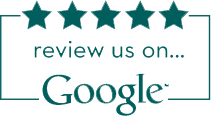Accelerative Learning – A Better Return on Training Investment (Part 1)

This blog post is the first of three posts on Accelerative Learning (AL) theory. In Part 1, we look at the different types of learning story and introduce the concept of Accelerative Learning.
The learning story (Part 1)
Picture the scene. A presenter is at the front of the room, 40 minutes into a session about ethical compliance obligations, literally talking to his 35th PowerPoint slide. There are a few people at the front fighting to stay awake, most are on their phone or tablet and one or two at the back are literally nodding off. The presenter speeds up in a bid to get it over and done with. At the end of the session, there is muted applause and a collective rush for the door. The company can tick the box on ethics training – but did anyone really learn anything? A day or two later and most of the participants probably won’t even remember having been in the room and will determine to avoid the next session like the plague.
Unfortunately, this scene is playing out in corporate meeting rooms every day all over the world and it begs the question, what’s the point? If people are leaving training sessions, going back to work and continuing to do the same things in the same way as they did before they went in, then it really is just a waste of time and money. It is estimated that businesses worldwide spend $350B each year on training (Administrate 2018), not including the cost of participant hours. What percentage of that spend is really having a material impact?
It doesn’t have to be like this. There are tried and tested learning approaches that can and do increase learning effectiveness, ensuring a significant return on a company’s investment in training. One particularly powerful, well researched and documented approach is Accelerative Learning (AL).
What is Accelerative Learning (AL)?
Accelerative Learning (AL) has been described as the most advanced teaching and learning method in use today (CAL 2019). It is a powerful approach based on over 50 years of brain research, designed to enhances both the training design and the learning process. When applied correctly, it has been proven to significantly increase learning effectiveness whilst saving time and money.
Based on the way that human beings naturally learn, AL taps into our innate potential for learning in a way that traditional learning methods cannot. It does this by fully involving the participant in their own learning experience using physical activity, creativity, colour, images, music and the whole training environment.
AL is described as activity-based and learner-driven (ABLeD), where learners discover and create their own knowledge through meaningful activities and authentic experience. The trainer becomes “the guide on the side” as opposed to “the sage on the stage” (CWW 2013), facilitating the learning process and delivering content only to supplement the learners’ own process of discovery and creation.
The learning story (Part 2)
Picture the scene with the application of AL. Three groups of participants have been busily discussing a scenario where a company employee is facing an ethical dilemma that looks like it could be in breach of the law. They’ve studied the legislation, figured out the relevant clauses, prepared their feedback and are about to present. The brief requires the first group to feedback with a poster and no words; the second group has to create a song; and the third group has to act it out. The room is tense with excited anticipation…
They leave the room not only having actively studied the content but also having seen, heard and felt it through the media of three different learning modalities. In the process, they have built relationships, broken down barriers, had a lot of fun and are ready to take what they have learned back to the workplace and sign up for the next session.
In Part 2, we explore the history of Accelerative Learning, how it is defined and the key principles for designing an AL program. If youhave questions about anything you’ve read so far, ask us here.
Sources and References:
Bathla, Som (2018). “The Magic of Accelerated Learning: Discover Strategies for Effective Learning, Improved Memorisation, Sharpened Focus and Become an Expert in Any Skill You Want”
Conners, K (2018). “Accelerated Learning: Advanced Strategies for Improved Memorisation, Effective Listening and Increased Productivity”
Kinnard, Karen (2007). “The Accelerated Learning Cycle: Are You Ready to Learn? Am I Ready to Lead?“
Labiosa, Libyan; Atkisson, Alan (1996). “Accelerated Learning – The value of playing games, singing songs, listening to stories and how learning is improved by the power of suggestion”
Labiosa, Libyan; Randig, Sinéad; Cassone, Philip (2018). “The Accelerative Learning Road Less Travelled”
McKeon, Kevin J. (1995). “What is this Thing Called Accelerated Leaming?” Training and Development Journal, Vol. 49, No. 6.
Nitsche, Pearl (2017). “Nonverbal Classroom Management – Group Strategies that Work”
Schornack, Gary (1996). “Accelerated Learning Techniques for Adults – An Instructional Design Concept for the Next Decade”
Smith, Alastair (2016). “Accelerated Learning in Practice”
Wilkens, Jonathan (2017). “Accelerated Learning: Accelerated Learning Techniques, Memory Techniques, Improve Your Memory, Learn More in Less”
Zemke, Ron (1995). “Accelerated Leaming: madness with a method,” Training and Development Journal, Vol. 32, No. l 0
Additional Information:
(CAL 2019). The Center for Accelerated Learning – blog for center for accelerated learning
(ICAL 2019). International Centre for Accelerative Learning (ICAL) – visit for more information
(Administrate 2018). Administrate Group – Click here to learn How the World spent 359 Billion on trainings
(Watson 2013). CCW Consulting LLC – learn more about consulting
Leadership Training
- Business Storytelling – A Critical Skill For Great Leadership
- Want to make history as a leader? Try studying these great leaders from history
- Solution Focused Leadership Coaching
- Leading the Way for Leaders: How Your Leadership Can Continue to Evolve
- How to Manage a High-Performance Team Made Up of Different Personalities
- Have You Mastered the 4 Leadership Fundamentals?
- Do You Practise Adaptive Leadership? Your Organisation Needs You To
- Why A Good Leader Needs To Understand Business Agility
- 20 Qualities of a Good Leader in Times of Change (A Checklist)
Corporate Training
- Why is your training, boring?
- Learning Initiatives at Work CAN Lead to A Great ROI. Here’s How
- Corporate Training Doesn’t Seem to Be Working? You Need an HPLJ Approach!
Facilitation Training
- Facilitate a High Impact Training Course with Accelerated Learning
- Accelerative Learning – A Better Return on Training Investment (Part 1)
- Accelerative Learning – A Better Return on Training Investment (Part 2)
- Accelerative Learning – A Better Return on Training Investment (Part 3)
Virtual Learning
Start Your High-Performance Learning Journey
WITH KALEIDOSKOPE NOW!

